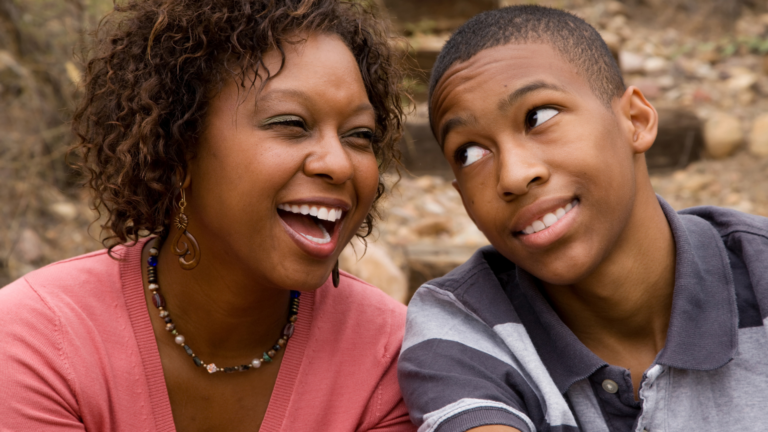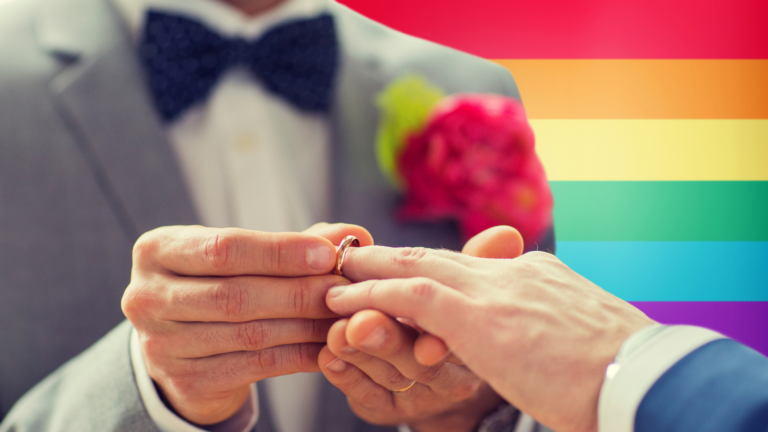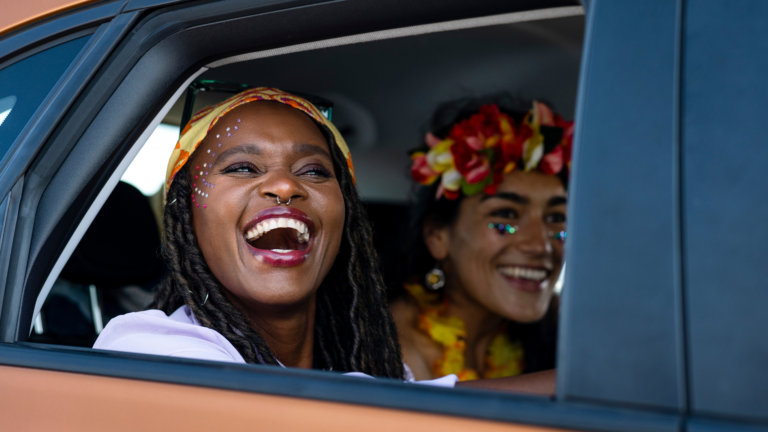This blog was originally published at pieterLvalk.com
Gay men are twice as likely to struggle with body shame, yet that shame keeps us from naming our pain and tending to that wound. Why are gay men particularly susceptible to body shame? How can we expose the lies body shame is telling us? How we can defang those lies with self-awareness and healthy connection?
But first, why should you care what I have to say? Body shame has been telling me a powerful lie for twenty years:
“If you looked like the perfect-looking guys in pornography, you’d be loved. You wouldn’t feel alone. You’re lonely because you don’t look like the guys in videos. It’s your fault. You have no one to blame but yourself.”
My body shame began in 6th grade.
This first began when I became aware of my same-sex attractions. In 6th grade, I realized I was gay, and I swore I would never let anyone know who I really was because I was ashamed and afraid others would find out and treat me poorly because of that. I felt very alone. The family and church I grew up in rarely talked about gay people, but when they did it was mostly related to politics or a simple statement: God is against homosexuality. It was clear that gay was bad and good Christians weren’t supposed to be gay.
I felt less than, gross, and disgusting because of my attractions. I doubted whether I deserved the love of my friends or parents. So after realizing I was gay, I tried to change that part of myself. Between the ages of 13 and 23, I prayed hundreds of prayers for God to make me straight, went to over a hundred hours of counseling with a therapist who thought he could reduce my gayness, and spent nine months with a pray-the-gay away ministry. But I’m still gay. I was so afraid of people finding out that I dropped out of theater just so people wouldn’t suspect I was gay. In middle school I played leading roles in both of our theater productions, but in high school I quickly realized that the same people in the theater club where also in our Gay-Straight Alliance. I could not risk anyone suspecting that I was gay. No more theater for Pieter.
I am most ashamed of the moments where my fear of being outed and disgust of my own sexuality turned to homophobia that hurt others. I’m haunted by a scene from high school cross country. Derek was the only openly gay guy in our school and he was on the team. As we waited at the starting line for a race to begin, everyone paired up for partner stretching. But one by one as Derek asked the other guys to help him stretch, he was turned away with “No. Gross! I don’t want to touch you and I don’t want you touching me!” Then he got to me and I (sheepishly) refused. I dished out the same pain I had spent tears and prayers to soothe.
I was ashamed. I was afraid. And I was alone. I thought there was no one else like me. I grew up being taught by TV and the culture around me a horrible stereotype of gay people: that they all went to group sex parties, that they all had AIDS, that they were all addicted to drugs, and that none of them wanted anything to do with God. Based on that image, I didn’t think I belonged with gay people. But on the other side, all of the Christians I knew were straight (or so I thought), and I was led to believe that in order to be a good Christian, you had to be straight. And then there was me, stuck in the no-man’s-land in the middle. I didn’t belong anywhere. I was alone.
In this isolation and loneliness, I yearned for some kind of connection, some kind of relief, some kind of escape. Like too many teens, I stumbled upon videos of strangers engaging in false intimacy—pornography—and it worked, at least for a season. I didn’t feel as alone. I felt some relief. I felt some escape. But that self-soothing slowly, sinisterly taught my heart the lie that to be loved, I had to look like the perfect men in those videos. Every time my brain was flooded with chemicals while watching perfect-looking people connecting in what seemed like the most meaningful, satisfying ways, it imprinted on my soul that that’s what it took not to be alone, that’s what you had to look like to be loved:
“If you looked like the perfect-looking guys in pornography, you’d be loved. You wouldn’t feel alone.”
So when I felt alone or saw people who appeared to be loved or at least who looked “better” than me and I assumed they were getting all of the love they wanted, body shame quickly provided an explanation:
“It’s because you don’t look like the guys in videos. It’s your fault. You have no one to blame but yourself.”
When I noticed a friend or a stranger shirtless at the lake or in the pool strutting six-pack abs and muscular shoulders
or someone’s biceps and veiny arms peeking from under a short-sleeve shirt
or a guy lifting his arms above his head to stretch, revealing some of his stomach under his shirt
or a guy wearing tighter fitting clothes showing off his legs or butt or chest muscles,
I then looked at myself in the mirror and just saw lonely and lumpy. Body shame quickly provided an explanation: “If you looked like these perfect-looking guys, you’d be loved. You wouldn’t feel alone. It’s your fault. You have no one to blame but yourself.”
Tragically, body shame is alarmingly common among gay men.
Multiple studies have shown that gay men are twice as likely to suffer from eating disorders and body shame as straight men and women, whereas lesbian women experience similar levels of eating disorders and body shame as straight women. Further research has indicated that approximately 54% of LGBT+ adolescents have been diagnosed with a full-syndrome eating disorder during their lifetime, with an additional 21% suspecting that they had an eating disorder at some point during their life [The Trevor Project, National Eating Disorders Association, & Reasons Eating Disorder Center (2018). Eating Disorders Among LGBTQ Youth: A 2018 National Assessment.]. Another study shows that gay males are significantly more likely than straight males to experience desire to be thin, bingeing, purging, and body dissatisfaction (overly concerned about body shape and size and level of femininity).
Why? Many straight women describe their body shame as an “awareness” that male desire is driven primarily by physical appearance. The lie tells women they must look a certain way to be loved—that they won’t be loved if they don’t look that way. They’re told that if they aren’t getting love and they don’t look that way, they have no one to blame but themselves. Yet women don’t typically choose who they love based primarily on physical appearance. Their attractions are driven by more of an equal mix of emotional and physical attraction. Instead, they are taught this awareness by advertisers hoping to profit from making women feel inadequate. And by straight men.
But gay men know this intuitively because their desires are also typically driven by physical appearance. The effect is doubled. They see both themselves and other men this way.
To be clear, this is just one form body shame takes. Body shame has many origins. And this shouldn’t matter to me. I’m committed to vocational singleness. I’m not seeking or expecting a romantic or sexual relationship with anyone. But when I’m lonely or feeling any kind of lack, the powerful lie of body shame speaks.
But here’s the problem: no matter how perfect I look, I can’t shake body shame.
My own experience has been that no matter how skinny I get or how much muscle I put on or how perfect my haircut is—no matter what changes about my appearance, it’s never been enough. I experience the same loneliness, not-enough-ness, and shame. Anecdotally, the same has been true for the gay men and straight women in my life who’ve shared with me about their body shame.
Why? No amount of beauty can protect us from loneliness.
Take a closer look at the lie: “If you looked like the perfect-looking guys in pornography, you’d be loved. You wouldn’t feel alone. You’re lonely because you don’t look like the guys in videos. It’s your fault. You have no one to blame but yourself.”
Do you notice how that the core need at play isn’t to be handsome or beautiful? Or even desired? It’s to not be alone. It’s to be connected in healthy ways and believe we are enough. We can’t kick body shame by working out or dieting more because those aren’t addressing the real problem. It’s a lie, a false solution, that keeps us running on a hamster wheel.
What is the solution then?
We’ve got to tend to the real need by exposing the lie, mourning our unmet needs, and taking practical steps to meet your intimacy needs in healthy ways.
First, we can expose the lie by recognizing it and speaking it out loud. We can bring it into the light by telling trusted people in our lives. And then we can repeat the process, lessening the power of the lie each time we expose it.
Second, we can recognize what we really need—where there’s truly a painful lack and mourn it. We’re made for lifelong, lived-in family with other believers, but, for a variety of reasons, many of us don’t have that. Even if some have found that (in part) in a mixed-orientation marriage, there were still probably years in the closet when they yearned to be honest with guy-friends and girl-friends in their life about their story and to enjoy friendship as their full selves, but couldn’t. Instead they were painfully alone. Some of you might find it helpful to gather with others of similar circumstances who empathize most easily, hold the pain of loneliness and doubting your worthiness of love before God and each other, and give yourself time and space to feel.
Third, we can go get what we need by meeting our intimacy needs in healthy ways. For some of you, a mixed-orientation marriage might be part of the solution. But even those in mixed-orientation marriages need healthy friendships in addition to their marriage. What does healthy, intimate friendships with people of the same sex look like? Let’s look to Scripture!
Many of the pillars of our faith depended on committed friendship to sustain their ministry: David and Jonathan, Ruth and Naomi, Jesus and John, and Paul and Timothy. Some of these individuals were in opposite-sex marriages outside of these deep friendships. Some were single. But all found themselves in non-sexual, non-romantic committed friendships. Let’s call them spiritual friendships.
Here’s how Ruth speaks about her friendship with Naomi in Ruth 1:16-18:
But Ruth replied, “Don’t urge me to leave you or to turn back from you. Where you go I will go, and where you stay I will stay. Your people will be my people and your God my God. Where you die I will die, and there I will be buried. May the Lord deal with me, be it ever so severely, if even death separates you and me.” When Naomi realized that Ruth was determined to go with her, she stopped urging her.
Here’s how Jonathan felt about his friendship with David in 1 Samuel 18:1-4:
After David had finished talking with Saul, Jonathan became one in spirit with David, and he loved him as himself. From that day Saul kept David with him and did not let him return home to his family. And Jonathan made a covenant with David because he loved him as himself. Jonathan took off the robe he was wearing and gave it to David, along with his tunic, and even his sword, his bow and his belt.
And David in 1 Samuel 20:41:
David got up from the south side of the stone and bowed down before Jonathan three times, with his face to the ground. Then they kissed each other and wept together—but David wept the most.
We have no reason to believe any of these women or men were same-sex attracted. We have no reason to believe these were secret homoerotic declarations. This kind of spiritual kinship, chosen family, spiritual friendship between people of the same sex was common through much of recorded history. Perhaps cultivating friendships like these can help you meet your intimacy needs in healthy ways and come to believe that you are worth loving. These spiritual friendships let each other need each other and give each other permission to ask of each others’ time, energy, etc. They expect to get hurt and commit to forgive. These friendships were enough to sustain those who were single, and a hearty supplement for those who were married.
For those of you who don’t get married, you will still need lifelong, lived-in family, even those called to vocational singleness. You’ll need just as much human intimacy as married couples. Every time Jesus and Paul speak of vocational singleness, they seem to recognize in some way that celibates still need human intimacy in permanent, lived-in family.
And finally, if you want to, you can exercise and be more careful about what you eat, but you don’t have to. I don’t have this figured out. I’m still exploring how to take care of my body by eating well and exercising reasonably without giving power to body shame. But perhaps sharing my story will be helpful for some of you out there, even if I’m still in process. Maybe you feel similarly, and you’ll see you’re not alone.







Karen Holleman
I’m praying that your wise words, courage and vulnerability will be embraced by many others experiencing confusion in two really hards places: same sex attraction and body image. If one of these isn’t hard enough. Keep writing, blogging and doing the work you’re called to do.
Pieter Valk
Thanks for your encouragement!